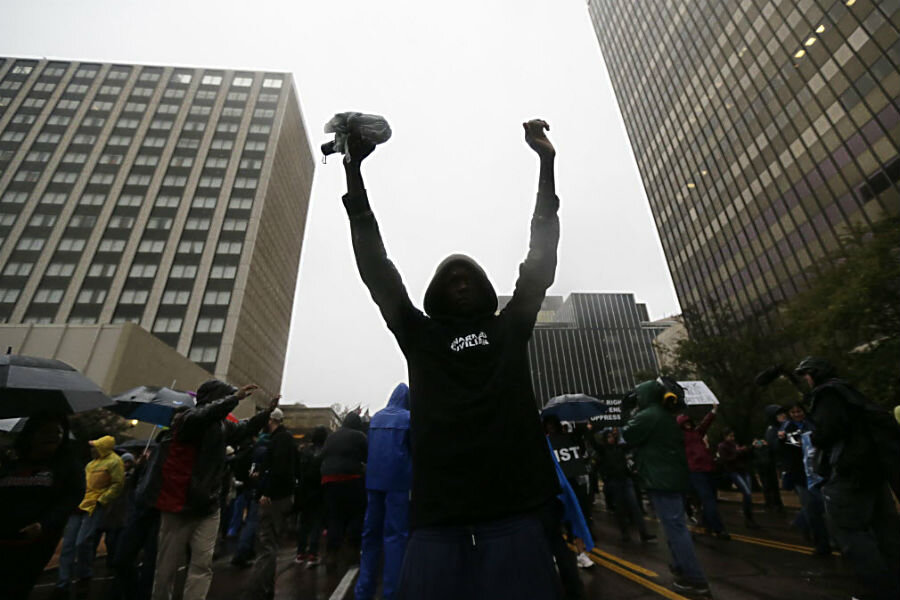Black teenagers 21 more times likely to be shot by police than white, study finds
Loading...
Michael Brown’s death this summer in Ferguson, Mo., raised anew a question long believed to be true by the African-American community: Are young black men are more likely to be killed by police in America than white?
A new study finds that the answer is a grim, resounding yes. Black male teenagers are 21 times more likely to be shot and killed by police than white males, according to “Deadly Force in Black and White,” by ProPublica, an independent public interest news organization.
Between 2010 and 2012, there were 1,217 deadly police shootings reported to the FBI. Black males between the ages of 15 and 19 were killed at a rate of 31.17 per million, according to ProPublica’s analysis. For white male teenagers, the rate dropped to 1.47 deaths per million.
“ProPublica's risk analysis on young males killed by police certainly seems to support what has been an article of faith in the African American community for decades: Blacks are being killed at disturbing rates when set against the rest of the American population,” write Ryan Gabrielson, Ryann Grochowski Jones, and Eric Sagara in their report, which was released Friday.
The issue was brought to stark national attention on Aug. 9, when Mr. Brown was shot and killed by police officer Darren Wilson. Two weeks of violent protests broke out in the wake of the unarmed teenager’s killing, and tensions have remained high ever since. This weekend, protesters are planning a "weekend of resistance" to demand justice for Brown.
A grand jury is expected to decide next month whether to charge Mr. Wilson in Brown’s death.
The ProPublica study looked at more than 12,000 incidents of police homicide reported between the years 1980 to 2012, the last year for which data was available. Among its findings: In 77 percent of cases where the cause of incidents were “undetermined,” the person shot was black. And certainly, there were many cases where an officer was afraid for his or her life. Between 2005 and 2009, 62 percent of cases reported "officer under attack" as the cause.
But the study comes with an important asterisk: ProPublica notes that the federal data, which are self-reported by police departments around the US, are “terribly incomplete.”
While more than 1,000 police departments have filed at least one report during the 33 years the data has been collected, not every department files every year. For example, Florida last reported its data to the federal government in 1997, while New York City’s last report was in 2007.
As a result, ProPublica’ findings could be skewed based on unreported killings, one expert notes.
However, he adds that the disparity in the death rates between black young men and white young men is so great, he doesn’t believe it could be resolved by “measurement error.”
"I doubt the measurement error would account for that,” David Klinger, a University of Missouri-St. Louis professor and expert on police use of deadly force, told ProPublica.







